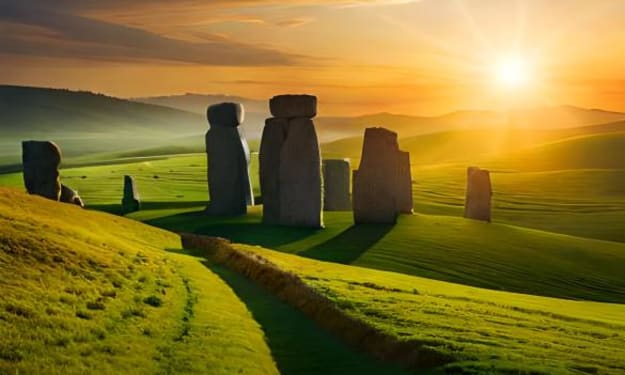Exploring the Mysterious Mind of Leonardo da Vinci
The Genius Behind the Art

Leonardo da Vinci is widely regarded as one of the most brilliant minds in human history. Born in 1452 in Vinci, Italy, he excelled as an artist, scientist, and inventor, leaving behind a vast body of work that has captivated and inspired generations. In this article, we will delve into the life, work, and legacy of this enigmatic figure, exploring the many facets of his genius and the enduring impact of his contributions to art, science, and culture.
Early Life
Da Vinci's birth and childhood were marked by a sense of curiosity and wonder that would define his entire life. As a young boy, he showed an interest in drawing and painting, often sketching the world around him in intricate detail. He was also fascinated by nature, observing and studying the flora and fauna of the Italian countryside with a keen eye.
Da Vinci's early influences were diverse and far-reaching, ranging from the work of other artists to the ideas of ancient philosophers. He was trained as an apprentice in the workshop of Andrea del Verrocchio, a prominent artist and sculptor of the time, where he learned the fundamentals of painting, drawing, and sculpture. He also studied the works of classical authors such as Aristotle and Pliny the Elder, as well as the teachings of the Christian church.
Artistic Achievements
Da Vinci's artistic achievements are numerous and varied, encompassing painting, sculpture, and architecture. His most famous works include the Mona Lisa, The Last Supper, and the Vitruvian Man, all of which demonstrate his mastery of composition, color, and form.
The Mona Lisa, painted in the early 16th century, is perhaps da Vinci's most iconic work, renowned for its enigmatic smile and lifelike realism. The Last Supper, a fresco painted for the refectory of the Santa Maria delle Grazie convent in Milan, is considered a masterpiece of Renaissance art, depicting the final meal of Jesus Christ and his disciples. The Vitruvian Man, a drawing of a nude male figure inscribed within a circle and a square, is an iconic representation of the human form and its relationship to geometry.
Da Vinci's artistic style was characterized by a sense of realism and naturalism, with a focus on the human figure and the natural world. He was known for his use of sfumato, a technique of blending colors and softening edges to create a subtle and lifelike effect. His works are also notable for their use of perspective, a technique of creating the illusion of depth and dimensionality on a two-dimensional surface.
Scientific Achievements
Da Vinci's scientific achievements are just as impressive as his artistic ones. He was a polymath who made significant contributions to fields such as anatomy, astronomy, and engineering.
Da Vinci's anatomical drawings and notes are among his most famous scientific works. He dissected human corpses to gain a better understanding of the human body, creating detailed sketches and diagrams that are still used by medical professionals today. He also made significant contributions to the field of astronomy, studying the movements of celestial bodies and creating detailed maps of the moon and other planets.
Da Vinci was also an accomplished engineer, designing machines and devices that were far ahead of their time. He conceptualized flying machines, war machines, and even a primitive robot. His designs for bridges, canals, and other infrastructure projects were also highly innovative, and some of his ideas were eventually implemented in the construction of real-world structures.
What set da Vinci apart from other scientists of his time was his approach to inquiry. He believed in observing and experimenting with the natural world, rather than relying on received wisdom or abstract theories. This empirical approach was groundbreaking and laid the foundation for the scientific method that would become the standard in later centuries.
Personal Life
Da Vinci's personal life was as intriguing and mysterious as his work. He was known to be a solitary figure, often immersing himself in his work for long periods of time. He was also deeply interested in human psychology and behavior, often making notes and sketches of people he encountered in his daily life.
There has been much speculation about da Vinci's sexuality, with some scholars suggesting that he may have been gay or bisexual. He was famously unmarried and had no children, leading to speculation about his romantic interests and relationships.
Legacy
Da Vinci's legacy is far-reaching and enduring. His contributions to art, science, and culture have inspired generations of thinkers and innovators, and his work continues to be studied and admired today.
In art, da Vinci's techniques and style have influenced countless artists, and his works remain some of the most famous and recognizable in the world. In science, his empirical approach and commitment to observation and experimentation continue to be relevant today, as we seek to understand the natural world in ever greater detail.
Perhaps da Vinci's greatest legacy is his belief in the power of human creativity and curiosity. He saw the world as a place of infinite wonder and possibility, and his work reflects his boundless curiosity and imagination.
Conclusion
In conclusion, Leonardo da Vinci was truly a Renaissance man, a brilliant artist, scientist, and thinker who made significant contributions to a wide range of fields. His legacy continues to inspire and fascinate us today, as we seek to understand and build upon his groundbreaking work.
FAQs
What was da Vinci's most famous work?
Da Vinci's most famous work is probably the Mona Lisa, a painting that has become an iconic symbol of art and culture.
Was da Vinci a scientist or an artist?
Da Vinci was both a scientist and an artist, excelling in both fields and making significant contributions to each.
What was da Vinci's approach to science?
Da Vinci's approach to science was empirical and observational, focused on exploring and understanding the natural world through experimentation and observation.
Did da Vinci have any romantic relationships?
Da Vinci's personal life is shrouded in mystery, but he was unmarried and had no children, leading to speculation about his romantic interests and relationships.
What was da Vinci's greatest contribution to art?
Da Vinci's greatest contribution to art was his innovative use of perspective, a technique of creating the illusion of depth and dimensionality on a two-dimensional surface.
About the Creator
Enjoyed the story? Support the Creator.
Subscribe for free to receive all their stories in your feed. You could also pledge your support or give them a one-off tip, letting them know you appreciate their work.






Comments
There are no comments for this story
Be the first to respond and start the conversation.